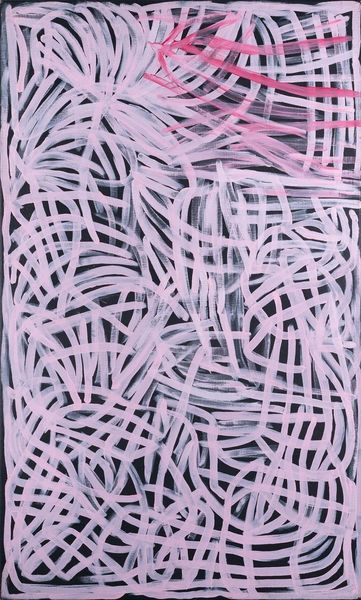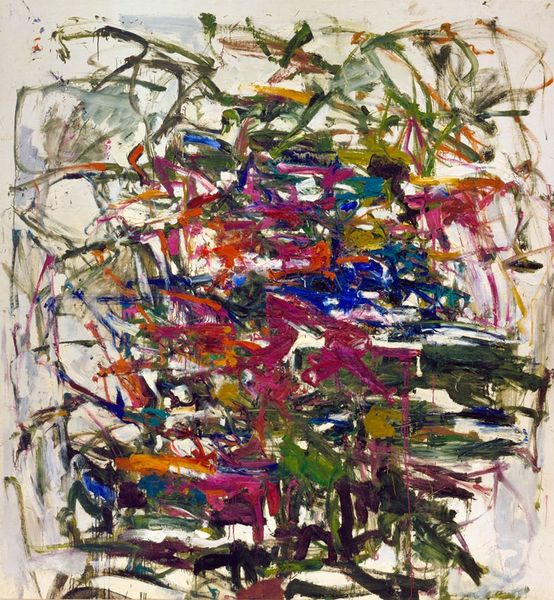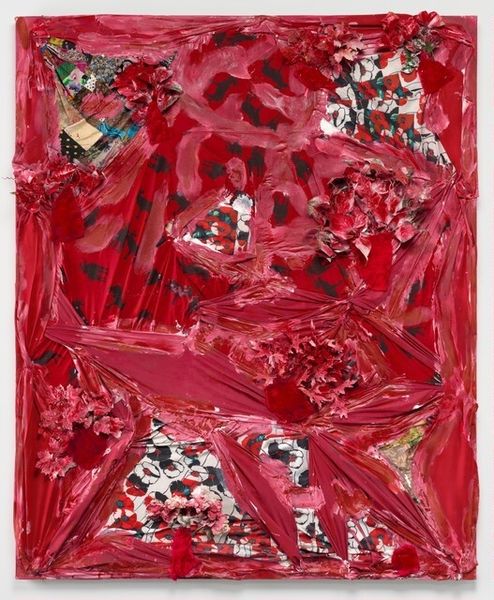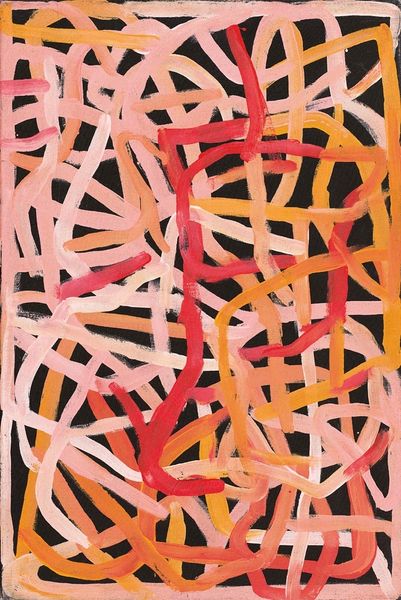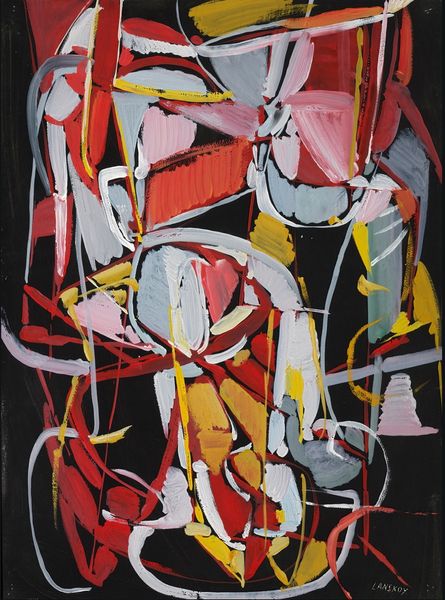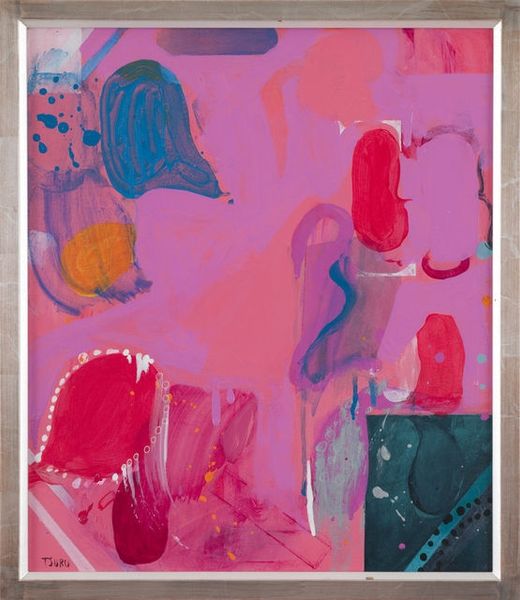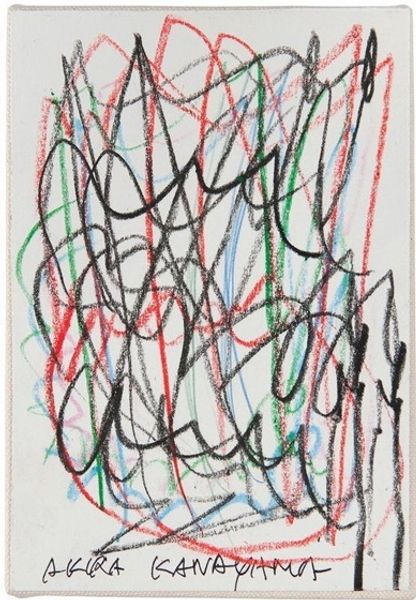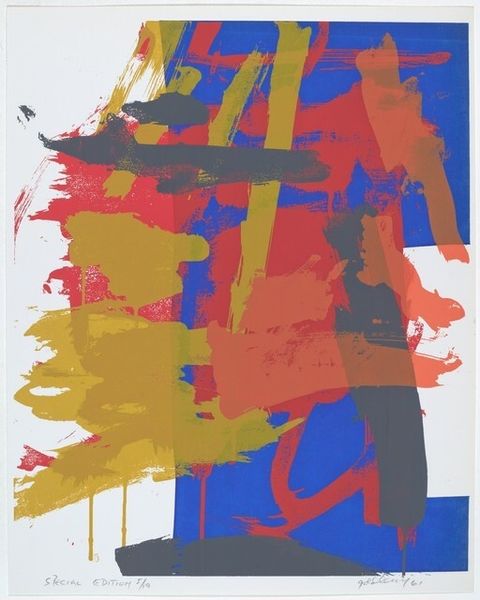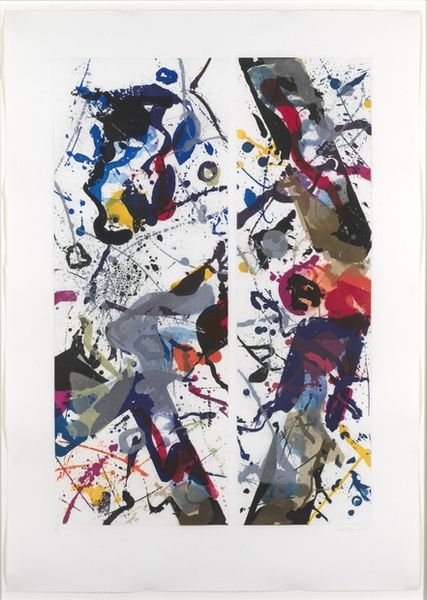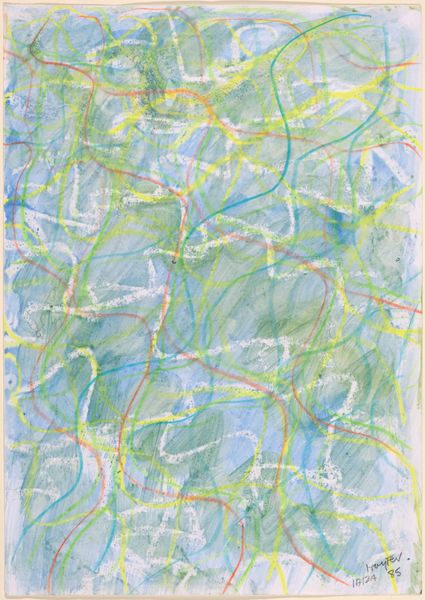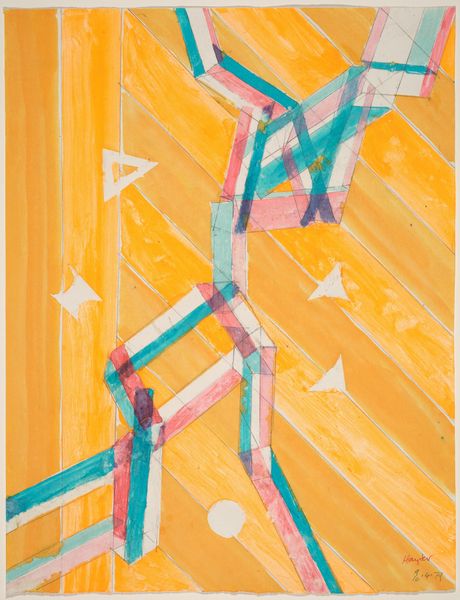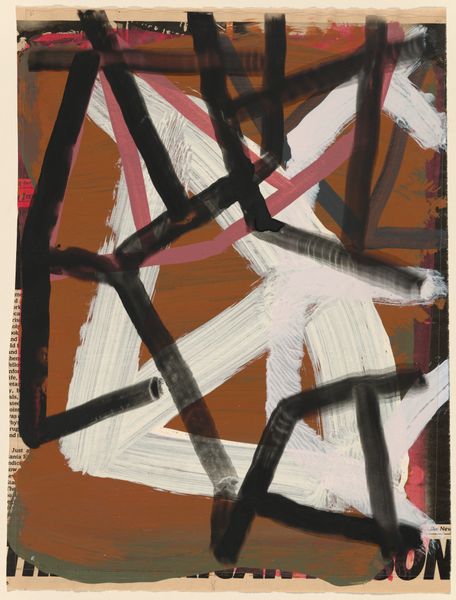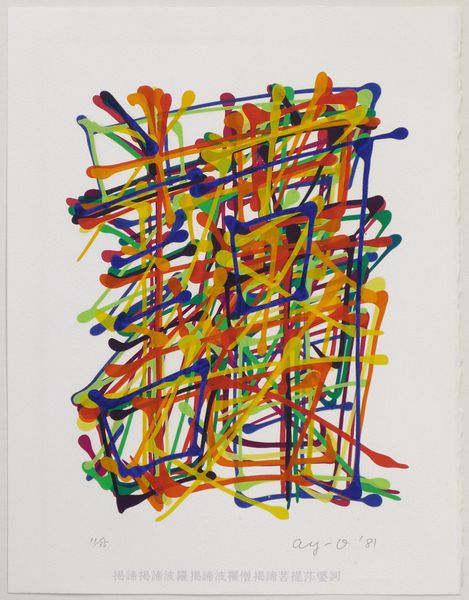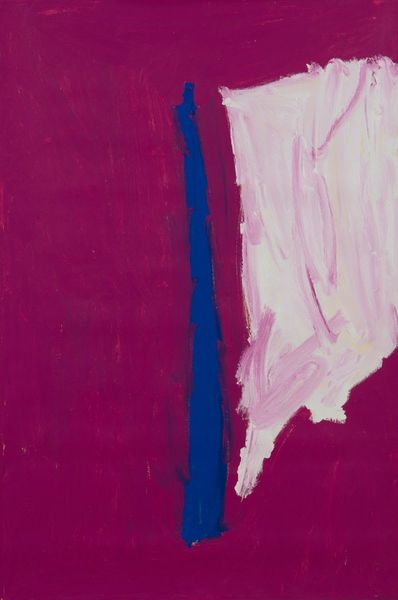
painting
#
abstract expressionism
#
organic
#
abstract painting
#
painting
#
abstract pattern
#
organic pattern
#
abstraction
#
line
#
abstract art
Copyright: Emily Kame Kngwarreye,Fair Use
Curator: Here we have "Kame Awelye," an acrylic on canvas piece completed in 1995 by Emily Kame Kngwarreye. Editor: My initial impression is… intense energy. The overlapping lines feel almost frantic, a flurry of pale pink and white against that stark black background. It definitely grabs your attention. Curator: Indeed. Kngwarreye was an Anmatyerre woman and a prominent figure in contemporary Indigenous Australian art. This painting, like many of her works, relates directly to her connection to the land and her role as an elder. The marks she makes mimic and map the patterns found within her specific location. Her place, her Country. It's material memory, transferred into abstract line. Editor: Seeing it that way shifts things for me. The pinks now evoke the softer hues of the outback landscape at dawn or dusk, contrasted sharply against the darkness of the soil. Are the curving lines suggestive of geographical contours, then, or something more symbolic? Curator: It's multilayered, both literal and metaphorical. The 'Awelye' in the title refers to women's ceremonies and body painting. She references this painting tradition to illustrate her personal relationship with the ancestral stories belonging to her custodianship. She makes very gestural marks to convey not just physical place but cultural belonging, which of course, extends back tens of thousands of years. Editor: So, the composition echoes both the landscape's physical lines and the ceremonial body paint, which is then mediated through acrylic paints... Is it then an exploration of different traditions, merging them while simultaneously exploring an immediate sense of location and her relationship to her land? Curator: Precisely! Kngwarreye blends indigenous knowledge and materials from western cultures in order to find new expressions for old beliefs, she shows the means through which inherited custom, as well as ancestral belonging, can be sustained. This is a clear act of translation from physical knowledge into acrylic form. Editor: It’s incredible how a seemingly abstract work can carry such deep cultural and personal weight. You've given me much to consider. Curator: And hopefully offered some new perspective to our listeners! The ability of abstract work to blend material history and embodied belief is its strongest and most undervalued quality, and it speaks volumes to Kngwarreye's success here.
Comments
No comments
Be the first to comment and join the conversation on the ultimate creative platform.
